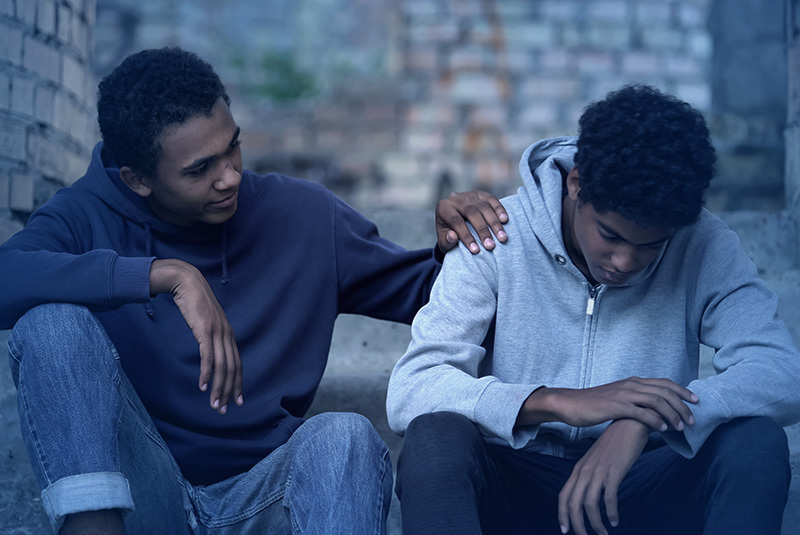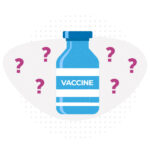COVID-19 takes its toll on kids’ mental health

As experts warn that increasing behavioral and mental health challenges could represent a “second wave” of the pandemic in kids and teens, a recent study suggests that hospitalizations for self-harm and suicide attempts show no signs of ebbing.
According to a study from Boston Children’s Hospital and the Hospital for Sick Children (SickKids) in Toronto, during the past year, childhood hospitalizations dropped for almost all conditions by about half compared with the same time frame in 2017 to 2019. However, hospitalizations for self-harm or suicide attempts did not fall.
“This study shows just how difficult COVID-19 has been on the mental health of children and teens,” says co-senior author Jay Berry, MD, MPH, chief of complex care at Boston Children’s. “While children experienced fewer physical health problems that required hospitalization, those facing mental health challenges were not as protected during the pandemic.”
The study was published in JAMA.
Hospitalizations from suicide and self-harm remained consistent in the pandemic
The study included hospital visits to 42 children’s hospitals throughout the country. Admissions were tracked for infants and children up to age 18 years in two time periods: ‘spring’ COVID-19 from March 15 to May 31 and ‘summer’ COVID-19 from June 1 to August 31.
Overall, the number of hospitalizations for all causes for children dropped by 48 percent during spring COVID-19 and 23 percent in summer COVID-19. “Most condition-specific hospitalizations just dropped down to almost nothing,” says Berry. For example, hospitalizations due to acute respiratory problems including asthma and bronchiolitis fell by 90 percent in spring 2020, and 72 to 86 percent drop in summer 2020, respectively. “This occurred not just at one or two hospitals, but dramatically across all of them in the study.”
But the researchers found one worrying trend: hospitalizations from self-harm did not decline compared with the same time periods in 2017 to 2019. Reasons why hospitalizations from suicide did not fall are not clearly known yet. But studies conducted elsewhere have found that rates of depression, anxiety, and suicidal ideation and planning increased in children during the COVID-19 pandemic.
If you notice any of the following symptoms in your children, be sure to contact your child’s physician:
– unusual changes in mood, such as ongoing irritability, feelings of hopelessness or rage, and frequent conflicts with friends and family
– changes in behavior, such as stepping back from personal relationships
– a loss of interest in activities previously enjoyed
– a hard time falling or staying asleep, or starting to sleep all the time
– changes in appetite, weight, or eating patterns
– problems with memory, thinking, or concentration
– less interest in schoolwork and drop in academic effort
– changes in appearance, such as lack of basic personal hygiene
– an increase in risky or reckless behaviors, such as using drugs or alcohol
Source: American Academy of Pediatrics
Possible reasons for the overall decline in all-cause or disease-specific hospitalizations
In some ways, seeing a drop in hospitalization numbers during COVID-19 was not too surprising. Yes, families may have been concerned about going to a hospital during the pandemic, but other factors may have contributed. Limited personal contact during the pandemic may have led to fewer respiratory infections, other infectious diseases, and even exacerbations of some chronic conditions, like asthma.
In addition, families may have been more proactive or structured in managing their children’s health problems at home. “Families may have been more apt to seek prompt medical care through other means, like virtual or telehealth visits or phone calls with their child’s care providers,” adds Berry. Here at Boston Children’s, the number of virtual visits during COVID-19 sharply increased last year as telehealth allowed our caregivers to meet with our families, including those requiring complex care.
Focus on preventive measures
“Families should feel confident about going to a hospital for an urgent medical issue,” says Berry. “At the same time, perhaps the pandemic has shown us that some pediatric hospitalizations may be much more preventable than previously known. We need to understand what preventive measures worked for families to keep their children safe at home during the pandemic.”
In terms of mental health, the study raises important implications for protecting children and youth from suicide and self-harm. “It’s clear that as the pandemic has continued, it has been very bad for the mental health of some children,” says Berry. “We need to be a lot more proactive about recognizing when our kids need help and step in quickly.”
Visit our COVID-19 parenting resources for more tips for keeping children your children healthy.
Related Posts :
-

A better treatment for endometriosis could lie in migraine medications
Endometriosis is a common, mysterious, often painful condition in which tissue similar to the uterine lining grows outside the uterus, ...
-

Model enables study of age-specific responses to COVID mRNA vaccines in a dish
mRNA vaccines clearly saved lives during the COVID-19 pandemic, but several studies suggest that older people had a somewhat reduced ...
-

Will people accept a fentanyl vaccine? Interviews draw thoughtful responses
In 2022, more than 100,000 people died from opioid overdoses in the U.S., according to the National Center for Health Statistics. ...
-

New insight into the effects of PPIs in children
Proton-pump inhibitors (PPIs) are frequently prescribed to suppress stomach acid in patients with gastroesophageal reflux disease (GERD). Prescribing rates of ...





